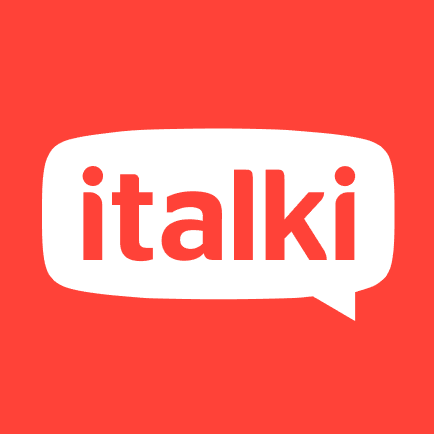
How to Tell if You’re Fluent in a Language [By Answering 6 Questions]
“Am I fluent?”
You might be asking yourself this question.
For language learners, the struggle is real. As you take more and more online language courses and strive to learn a language fluently or get fluent faster, chances are you’ll always be wondering where you’re at.
All you need to do is ask yourself the six valuable questions below.
Contents
Download: This blog post is available as a convenient and portable PDF that you can take anywhere. Click here to get a copy. (Download)
The Challenge of Defining “Fluent”
Merriam-Webster Dictionary defines “fluent” as “capable of using a language easily and accurately.” However, “easily” may seem vague, at best. This makes the definition highly flexible.
Plus, there are different degrees of fluency. Language classification systems and language proficiency tests attempt to quantify levels of fluency on clear scales, so if you really want to approximate your level of fluency, a test can help.
Finally, the word “fluent” can (and does) mean different things to different people. Since the main idea is that you need to speak a language “easily,” everyone can hold a different idea about what this means. To some people, this might just mean being able to hold a basic conversation. To others, it means being able to communicate or understand nearly any idea on any topic.
That all being said, there are some basic questions you can ask yourself to get an idea of how close you are to what’s commonly accepted as fluency. So let’s find out how fluent you are!
6 Questions to Check if You’re Fluent
1. Do I translate in my head?
Considering whether or not you translate in your head is a helpful way to measure fluency. If you translate between your target and native language in your head continually, chances are you’re not what most people would consider “fluent.”
That’s because full fluency generally requires an ability to think in your target language. Thinking in your target language is important because it saves valuable time, improving your ability to interact fully.
One simple way to transition toward thinking in your target language is through journaling. Each day, set aside 15 minutes to write about your day so far, what you did and how you’re feeling in your target language. Doing this will encourage you to think in your target language and save you the effort of translating in your head.
Additionally, if you know you’re going to write in your target language at the end of the day, you might find yourself thinking about your feelings and activities in your target language during the day to prepare for your journaling time.
2. How quickly can I speak?
Some people speak slowly even in their native tongue, but if you speak much more slowly in your target language than in your native language, chances are you’re not fluent just yet.
Having to speak slowly is usually a mark of inexperience speaking the language. If you want to improve your rate of speed, one key way to do it is to find a language learning buddy for conversation practice. The more you practice, the more your speed will naturally improve.
To find a language learning buddy, you might check your local university or school system.
Still no luck? Reddit’s language learning community might help you connect with someone who’s studying the same language as you. Once you’ve found the right match, you can practice via Zoom or Skype.
3. How quickly can I understand?
Perhaps even more important than the ability to speak quickly is the ability to understand quickly. When you hear your target language spoken, do you immediately understand what you hear, or does it take you a moment?
One good way to measure this is to think about your last conversation in your target language. After the other speaker finished, did you already know what they’d said, or did you have to go over it again in your head? Immediately understanding your target language with little effort points towards fluency.
Does it still take you a while to understand the language? One way to improve your ability to understand spoken language quickly is to watch TV and movies in your target language.
Luckily for you, Netflix is a treasure trove of foreign language programming. If you’re still a ways off from fluency, you might want to start watching with subtitles. As you get more comfortable listening to your target language, remove the subtitles.
But how will you know when your listening skills are strong enough to be considered fluent? One surefire way is to watch unfamiliar material in your target language without subtitles and see how things go.
If you can fully understand even rapid-fire dialogue without pausing, chances are you can consider yourself fluent.
If you want to watch material that’s for native speakers but with learning features, try a program such as FluentU.FluentU takes authentic videos—like music videos, movie trailers, news and inspiring talks—and turns them into personalized language learning lessons.
You can try FluentU for free for 2 weeks. Check out the website or download the iOS app or Android app.
P.S. Click here to take advantage of our current sale! (Expires at the end of this month.)
4. How hard do I need to think about what I want to say?
If you need to think through anything you say or write out carefully, chances are, you’re not yet fluent. For full fluency, you should be able to speak or write off-the-cuff, like you can in your native language. This is a clear marker of ease in using the language, which is a sign of fluency.
One way to practice thinking your words out less is to post on social media in your target language. After all, social media is clearly the place for ill-thought-out communication!
You might want to start a separate account on a social media outlet like Twitter, now known as X, dedicated solely to your target language. You may want to avoid using your real name so that if you mess up too badly, you can distance yourself from the account!
Then, whenever something happens that you want to react to, simply post quickly in your target language without thinking out the language you’re using. Over time, this will get easier and easier.
5. Can native speakers understand me?
If you really are fluent in your target language, native speakers should definitely be able to understand you. Do your native speaker friends ask you to repeat what you’ve said? Do they look confused whenever you speak? If so, you’re probably not fluent just yet.
If they can’t understand you, it could be an issue with pronunciation, accent, vocabulary or grammar, but regardless of the root cause, this problem can definitely keep you from being fluent.
One way to determine what exactly is stopping native speakers from understanding you is to hire a native-speaking tutor through a website like italki.
A tutor can help assess your areas of weakness and help you become more fluent. If you’re not sure if a native speaker can understand you, a tutor will be able to tell you.
6. How comfortable am I with my target language?
Yes, comfort counts when it comes to fluency! If you can speak your target language as comfortably as your native language, that’s a great sign that you might be fluent. If you still get twitchy when you have to actually use your target language, there’s a strong chance you’re not quite fluent.

One way to improve your skill and comfort level is to find a language exchange partner who’s a native speaker. Language exchange partners will help you practice their mother tongue in exchange for help practicing yours.
Language exchange services like Tandem are a helpful way to connect with your ideal conversation partner.
To get the most out of language exchange, keep a list of things to talk about. For instance, if you’re struggling with a vocabulary word or grammar structure, you might jot it down so that you can talk to your conversation partner about it.
Same thing for topics you struggle with. For example, if you’re going on a business trip, you might ask your conversation partner to simulate a business meeting with you to make yourself more comfortable using this specific vocabulary set.
Regardless of how you do it, interacting more in your target language can massively increase your confidence, so this is a surefire way to get more comfortable and closer to fluency.
Are you fluent? With these six questions, you might be able to finally answer that.
And if the answer is no, hopefully you have a good idea now of how to work on moving towards that goal!
Download: This blog post is available as a convenient and portable PDF that you can take anywhere. Click here to get a copy. (Download)
And One More Thing...
If you dig the idea of learning on your own time from the comfort of your smart device with real-life authentic language content, you'll love using FluentU.
With FluentU, you'll learn real languages—as they're spoken by native speakers. FluentU has a wide variety of videos as you can see here:
FluentU has interactive captions that let you tap on any word to see an image, definition, audio and useful examples. Now native language content is within reach with interactive transcripts.
Didn't catch something? Go back and listen again. Missed a word? Hover your mouse over the subtitles to instantly view definitions.
You can learn all the vocabulary in any video with FluentU's "learn mode." Swipe left or right to see more examples for the word you’re learning.
And FluentU always keeps track of vocabulary that you’re learning. It gives you extra practice with difficult words—and reminds you when it’s time to review what you’ve learned. You get a truly personalized experience.
Start using the FluentU website on your computer or tablet or, better yet, download the FluentU app from the iTunes or Google Play store. Click here to take advantage of our current sale! (Expires at the end of this month.)











